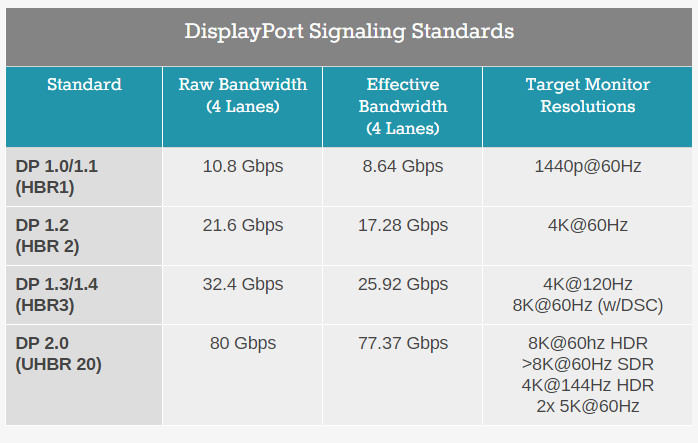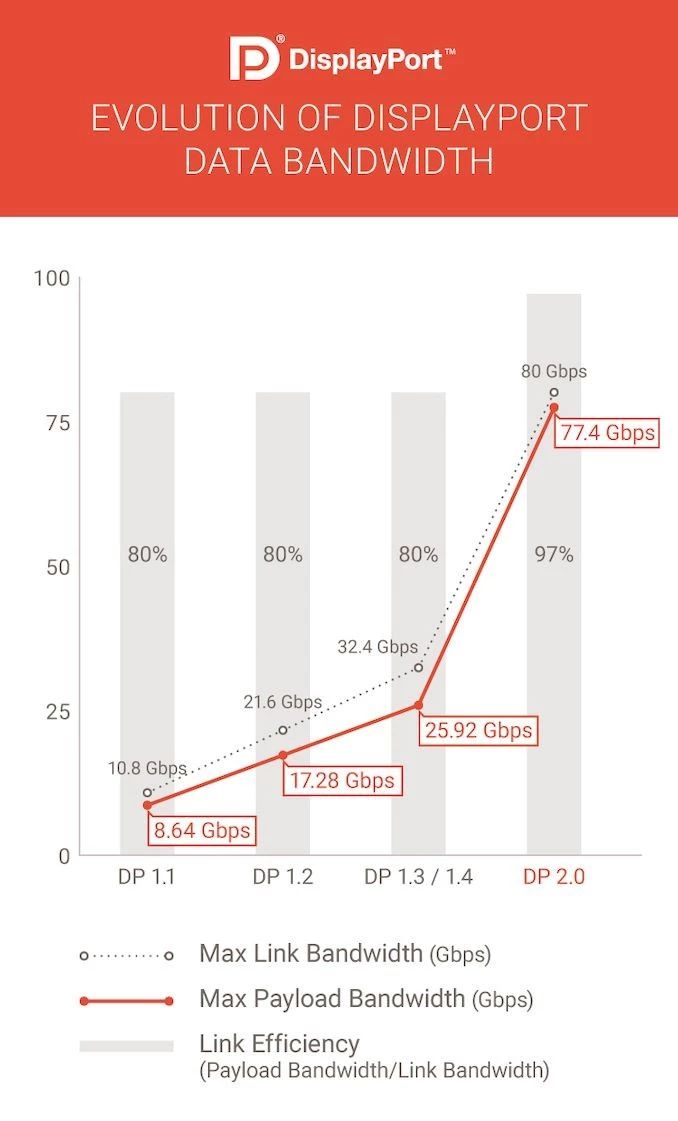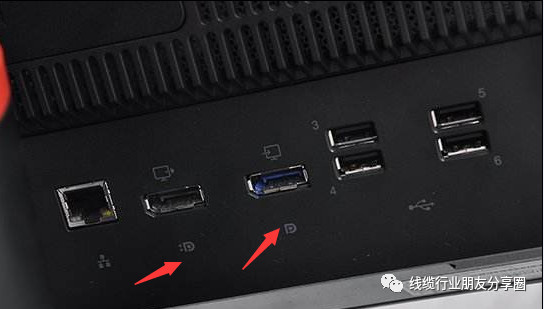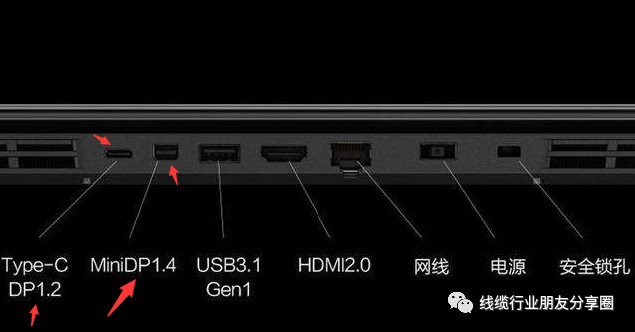DisplayPort cables
Is a high-definition digital display interface standard that can be connected to computers and monitors, as well as computers and home theaters. In terms of performance, DisplayPort 2.0 supports a maximum transmission bandwidth of 80Gb/S. From June 26, 2019, VESA standard organization officially announced the new DisplayPort 2.0 data transmission standard specification, which is closely combined with Thunder 3 and USB-C. It can meet the needs of 8K and higher level display output. Is the first major update since the DisplayPort 1.4 protocol.
Before that, the theoretical total bandwidth of DP 1.1, 1.2 and 1.3/1.4 was 10.8Gbps, 21.6Gbps and 32.4Gbps respectively, but the efficient rate was only 80% (8/10b code), which was difficult to meet the requirements of 6K and 8K high resolution, high color depth and high refresh rate.
DP 2.0 increases the theoretical bandwidth to 80Gbps, and uses a new encoding mechanism, 128/132b, which increases the efficiency to 97%. The actual usable bandwidth is up to 77.4Gbps, equivalent to three times the DP 1.3/1.4, and far exceeds the theoretical bandwidth of HDMI 2.1 of 48Gbps.
As a result, DP 2.0 can easily support 8K/60Hz HDR, >8K/60Hz SDR, 4K/144Hz HDR, 2×5K/60Hz and other output formats. Not only can it support any 8K monitor without compression, but it can also support 30-bit color depth (over a billion colors). Implement 8K HDR.


DisplayPort 2.0: Thunderbolt 3, UHBR, and passive data cable
In terms of data lines, DP 2.0 actually introduces three different mechanisms, with each channel bandwidth set at 10Gbps, 13.5Gbps and 20Gbps respectively. VESA calls it “UHBR/Ultra High Bit Rate”. According to the bandwidth respectively called UHBR 10, UHBR 13.5, UHBR 20.
The original bandwidth of UHBR 10 is 40Gbps, and the effective bandwidth is 38.69Gbps. Passive copper wire can be used. The previous DP 8K wire certification project actually includes it, that is, the DP data wire that passes the 8K certification meets the signal integrity requirements of UHBR 10.
UHBR 13.5 and UHBR 20 are different. The original bandwidths are 54Gbps and 80Gbps, and the effective bandwidths are 52.22Gbps and 77.37Gbps. Passive wires can only be used for very short distance transmission, such as notebook docking.


Post time: Apr-17-2023





